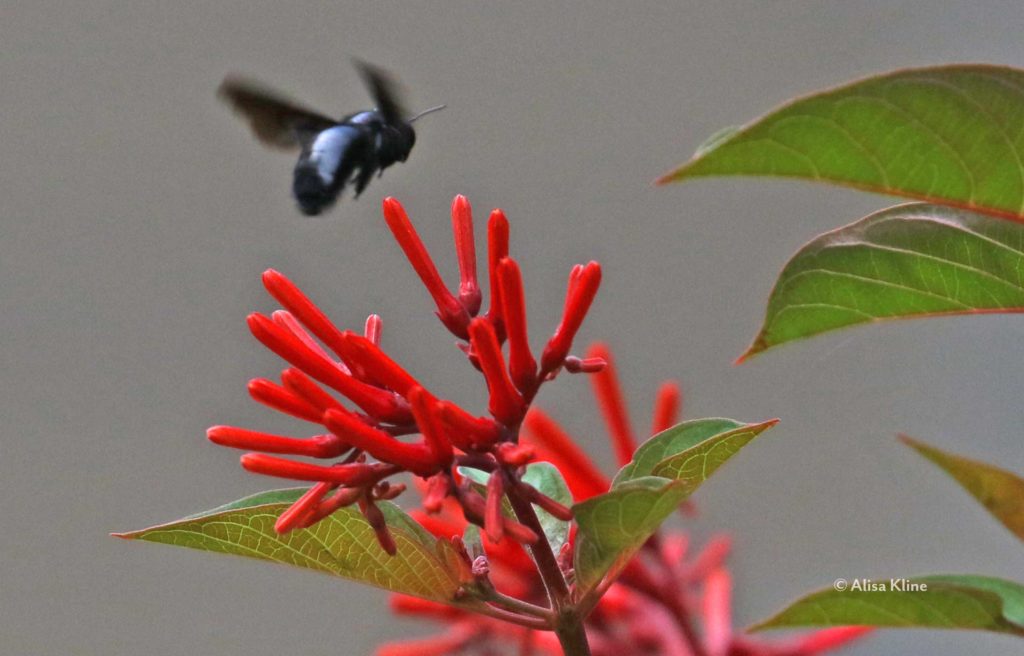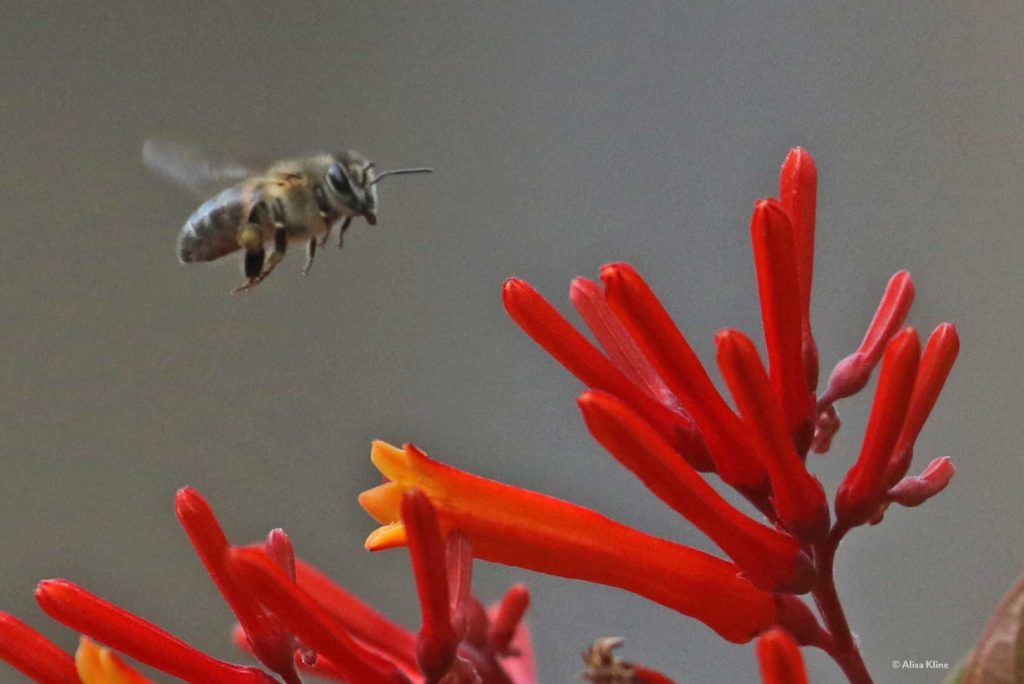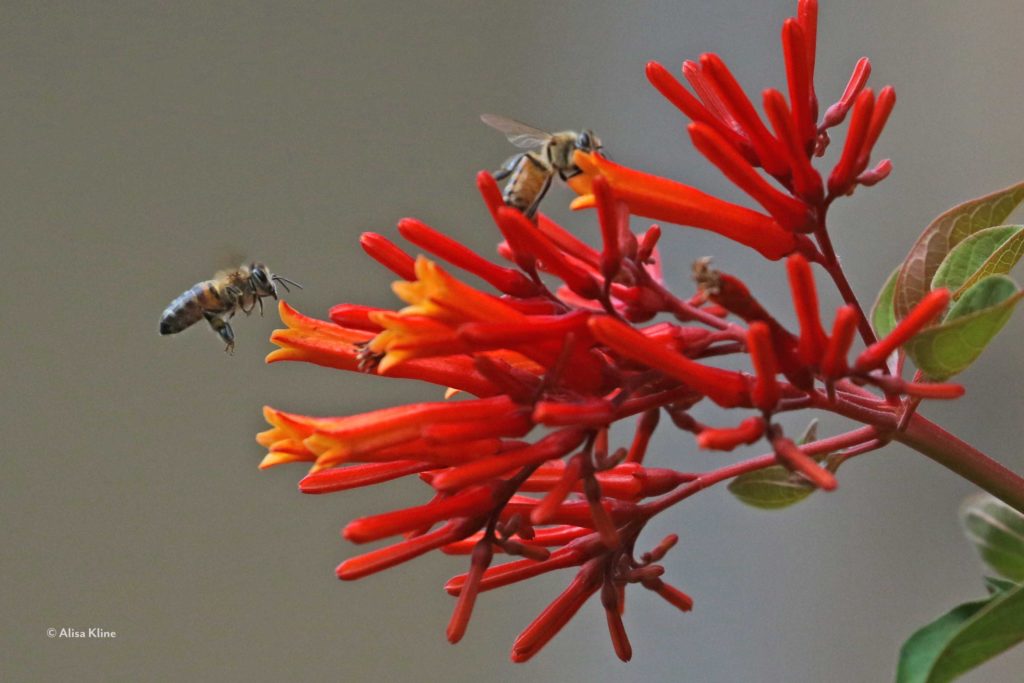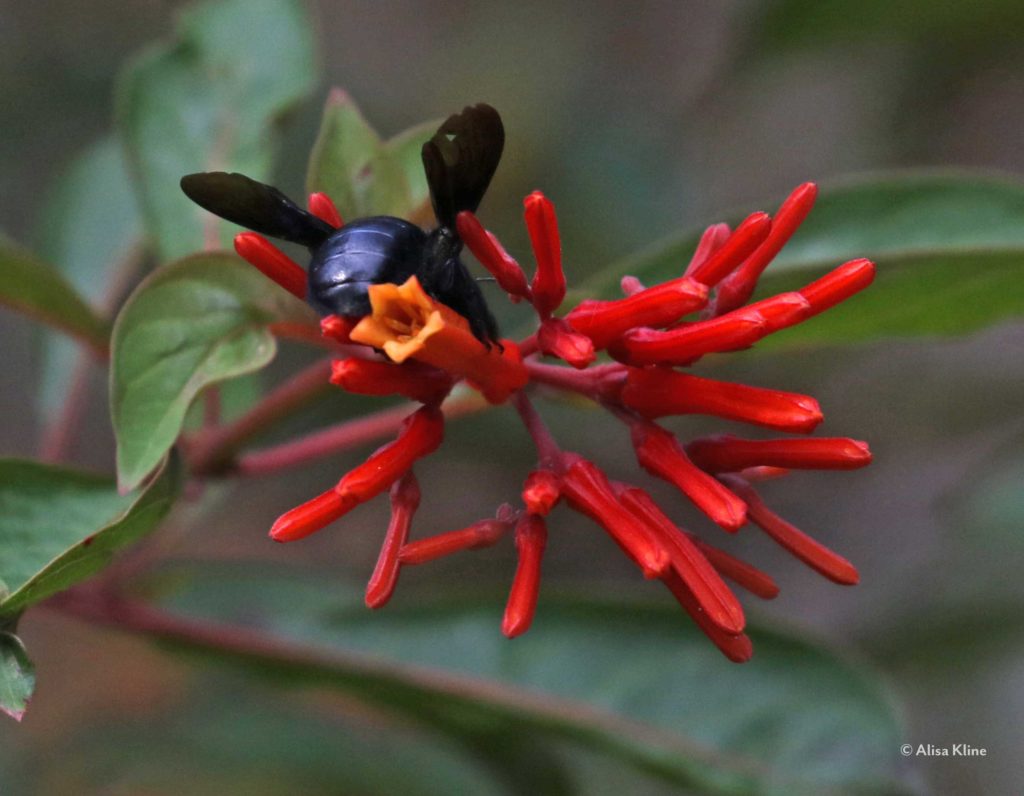Point of view is everything
On television, we watch a show about lions. We watch a lioness raise her cubs. They are cute. But the narrator says in his slightly hushed narrator voice, “If she doesn’t find food soon, she will be forced to abandon her cubs.” Then, we see footage of a lioness taking down a young antelope. We nearly sob with joy when that antelope hits the ground.
On a different show, we are watching migration on the Serengeti. We have been following a herd of antelope and got to watch the females calve and the youngsters frolic in the endless grass. But water is getting scarce. The herd is in trouble. Now, we see that same lion footage, this time watching an antelope we imagine we know get slaughtered. We are shocked, filled with horror.
Same footage, but the shifting point of view completely changes how we see it.
This does have something to do with the carpenter bees and honeybees that are no doubt in your yard at this very moment, but it’s going to take a little while to get there.

Carpenter bee hovering
Carpenter bees are named for their woodworking. Females will chew a small tunnel with a lovely circular entrance in a dead branch, old log, or deck riser and therein lay eggs. Because she has to chew through wood, she comes equipped with an impressive set of jaws.

Honeybee hovering
Honeybees are named for the honey they store away to keep the hive fed during seasons without food. Honeybees must have the best PR agent in the natural world. They are sold to us as the very embodiment of good citizenship. Always cooperative with the hive, always working hard, always knowing their place in the hierarchy. They are solid citizens. We put them on kid’s toys even though the odds of getting stung by a honeybee are easily a hundred times higher than getting stung by a carpenter bee. You practically have to step on a carpenter bee to get stung.
Despite their demonstrably docile nature, carpenter bees get “profiled” a lot. Google a species of native bee (we’ve got 600 of them here in Texas) and the word pollination and you will get a flurry of links extolling how this or that plant is danged thrilled to have a leafcutter bee, or long-horned bee, or whatever bee visiting.
Not carpenter bees. Google carpenter bee and pollination and you get agricultural journals studying whether carpenter bees do or do not benefit this or that plant. Other bees do not come in for this level of suspicion, but carpenter bees aren’t like other bees and ag scientists sometimes can’t decide whether they should regard the large carpenter bee as more of a pest than a pollinator.

Honeybees looking innocent
The reason for this vilification is that carpenter bees “steal” nectar.
Flowers arrange themselves so that insects have to crawl or fly through pollen in order to get to the sweet nectar that they are after. It’s a fair deal. The plant needs help reproducing, the insect needs sugar.
Large carpenter bees, however, are exactly that. Large. Really, really large. They don’t fit into the delicate tubes that flowers can use to draw bees to the nectar pot at the base. Those flowers are designed for a butterfly tongue. Carpenter bees are built like left tackles.

She’s never going to fit in that tube
But a bee’s still got to eat. So carpenter bees use those strong jaws to bore a hole from the outside of the flower right into that nectar pot. Then, the carpenter bee holds on and gets a few sips.
This behavior is referred to in the literature as nectar robbing or, even better, illegitimate pollination. It makes it sound immoral. Carpenter bees violate the equal-shares morality of I-help-you-reproduce-and-you-give-me-food deal that plants and pollinators worked out eons ago. They don’t play fair.
I stumbled upon the agricultural world’s suspicion of carpenter bees because I saw something unexpected and wanted more info.
I saw honeybees nectar robbing! This is new in my yard. I’ve been watching the carpenter bees do it for years, particularly with the salvia that grows with abandon everywhere. Of course, all these photos are on hamelia. They like that a lot, too.

This honeybee is nectar robbing
I thought I might be misunderstanding what I saw, so I asked the Internet. Turns out, honeybees learn the behavior from carpenter bees. And there are journal articles discussing whether the presence of large carpenter bees “corrupt” legitimate pollinators and reduce the productivity of a field. Again, the language of morality.
The honeybees don’t learn to chew holes in flowers. They don’t have the jaws for that. They look for holes already drilled by the larger bees and stick their tongues in for a few quick nips. In this footage, the good-citizen honeybee not only nectar robs, she seems to bully a carpenter bee off the hole she just made.
Of course, none of these bees are good or bad. Some plants are pollinated best by carpenter bees. Others by honeybees. It has even been determined that some plants do better if they are not only nectar robbed by carpenter bees but when honeybees join in. Everyone gets more food so they stay around the plant for more time.
But I keep being struck by the moral dimension we seem to attach to the poor carpenter bee, forever accused of theft because she is too large for some flowers.
I would like to propose that we rethink the carpenter bee. All the concern about carpenter bees has to do with how much money a farmer can get for her crop. There’s not so much a moral dimension as self-interest. Let’s tell the story from a different point of view. The honeybee. (I said I would get back to it!)
Honeybees are captives of their overlord the Queen who makes them work from sunup to sundown collecting food for her new children. The poor honeybees have to survive on whatever they can sip from the flowers as they labor, but it’s never enough because they always have to bring some home for “the winter.”
Carpenter bees are the gentle giants who help the honeybees by giving them access to enough food so they are not hungry anymore. Their activity will now be forever known as nectar-giving.
The point of view is everything.

